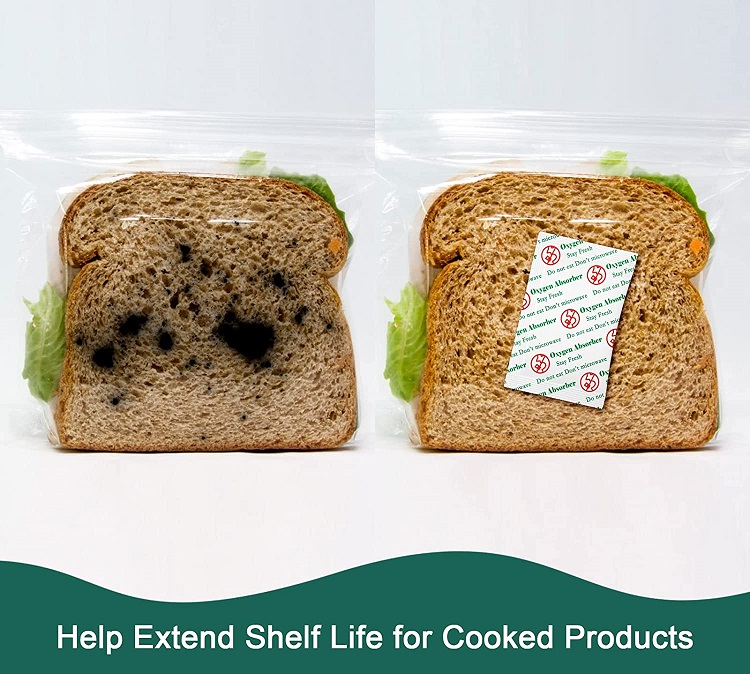Do we need oxygen absorbers for food storage?
Yes, oxygen absorbers are commonly used for food storage, especially for long-term or extended shelf life storage. Oxygen absorbers help to maintain the quality and freshness of food products by reducing the oxygen levels within the packaging.
Here are a few reasons why oxygen absorbers are used for food storage:
- Prevention of Oxidation: Oxygen is a primary cause of food deterioration and spoilage. It can lead to oxidative reactions, which can degrade the flavor, texture, color, and nutritional value of food items. Oxygen absorbers remove oxygen from the packaging, creating a low-oxygen or oxygen-free environment, which helps to inhibit oxidation and preserve the quality of the stored food.
- Inhibition of Microbial Growth: Many microorganisms, such as mold and bacteria, require oxygen to grow and thrive. By reducing the oxygen levels, oxygen absorbers help to create an inhospitable environment for microbial growth, thereby extending the shelf life of the food and reducing the risk of foodborne illnesses.
- Prevention of Insect Infestation: Insects, particularly certain types of beetles and weevils, can infest stored food products. Oxygen absorbers help to create an environment that is unfavorable for insect survival, as insects need oxygen to live. Using oxygen absorbers in conjunction with proper sealing can help prevent insect infestation and protect the stored food.
- Moisture Control: Some oxygen absorbers, known as dual-function absorbers, also have moisture-absorbing properties. They can help control the moisture content within the packaging, which is crucial for certain food items. By reducing moisture, these absorbers help prevent the growth of mold and maintain the texture and crispness of certain products.
It’s important to note that oxygen absorbers should be used in appropriate packaging, such as Mylar bags or vacuum-sealed containers, that provide an airtight seal. The packaging should be suitable for the specific food item being stored and should be compatible with the oxygen absorber’s capacity and activation time. Additionally, it’s crucial to follow the manufacturer’s instructions regarding the proper usage and quantity of oxygen absorbers for specific food products.
Oxygen absorbers are commonly used in long-term food storage scenarios, such as emergency food supplies, dehydrated or freeze-dried foods, grains, spices, and other non-perishable items. For short-term storage or items that are regularly consumed and replenished, oxygen absorbers may not be necessary.
